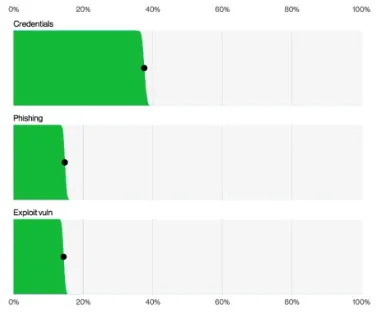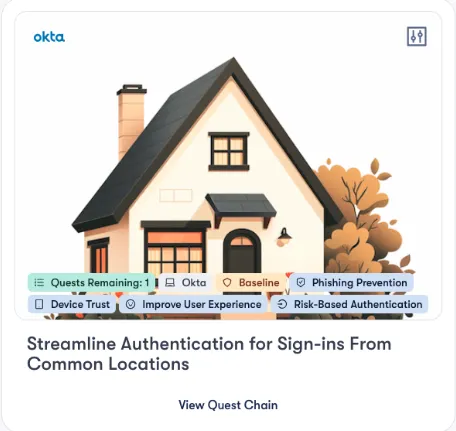One of the most exciting parts of joining an early-stage company is the opportunity to do things differently. Shortly after I joined Reach, I learned that customers were using Reach to help streamline authentication processes for low-risk users, particularly those who log in from the same locations and devices each day. Rather than constantly prompting for multi-factor authentication, Reach enables security teams to identify and control exposure in place for users in familiar scenarios, reducing the friction for users, while maintaining security.
Credential abuse has consistently topped the Verizon DBIR for several years, yet there’s growing frustration from users when required to authenticate with MFA too often. Prove Security’s 2023 State of MFA report revealed that 33% of respondents didn’t enable MFA because they felt “it’s annoying”.

While the DBIR shows an increase in vulnerabilities being exploited as an initial access method, credential abuse and phishing still remain the primary ways that adversaries are gaining network access.

While this can be a cause for concern and might lead some to tighten controls for end users, it’s important to consider the human side of security. When users get frustrated for feeling that security is hindering their work, they often find ways to bypass those controls. Taking a broader view of your security program can help strike a balance by improving security hygiene and identifying compensating controls to mitigate risks as well as specific situations where more trust can be extended to a user. For example, a recent Quest in Reach introduced the option to prioritize and tailor controls, streamlining authentication in Okta for users signing in from familiar locations, reducing unnecessary friction while still maintaining security and continuously validating the authentication process.

This example shows how we can leverage your tech stack to protect the organization while making life easier for users. If malware happens to reach a user’s endpoint, whether coming from a malicious email or a different source, Reach provides additional recommendations for firewalls and endpoints to prevent the download of second-stage payloads and further exposure, empowering security teams to mobilize changes quickly.

Security is a delicate balance between users, tools, and policies. One of the most powerful aspects of Reach is its efficacy in tailoring recommendations based on specific users and scenarios. While many organizations begin by tightening their security measures, Reach provides the flexibility to tailor these controls for well-known users and low-risk situations. This approach helps security teams be seen as enablers rather than the department that always says “no”.
To see a live demo of this in action, a recording of our recent webinar is here.
More About Reach Security
Reach is the first AI purpose-built to reprogram your security infrastructure based on who you are and how you're being attacked. Organizations of all sizes trust Reach to make mission-critical decisions because it doesn't hallucinate and it doesn't make mistakes. It's a different kind of AI. To learn more, visit reach.security/try-reach.










